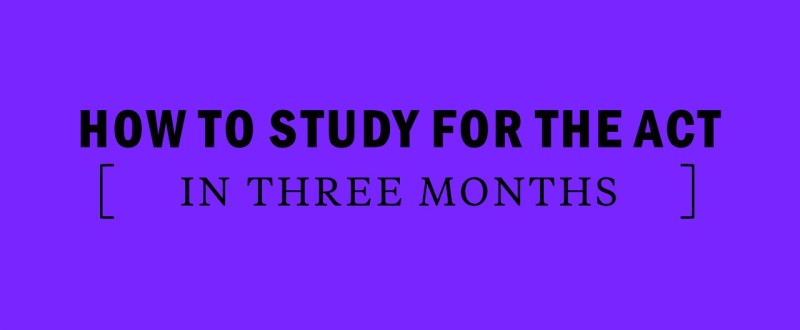Top 10 Tips for ACT English
/in ACT /by adminIt’s always a good idea to take ACT practice tests, and learn new ACT strategies. These items can help you develop new skills when approaching and answering ACT English questions. So as you prepare for the English section of the ACT, keep these 10 tips in mind for an awesome ACT score.
[ See Also: Top 10 Tips for ACT Reading • Top 10 Tips for ACT Math • Top 10 Tips for ACT Science ]
ACT English Tip #10: Think Simple
As far as the ACT is concerned, the best writing uses the fewest number of words to convey an idea. This doesn’t always mean the shortest answer is the best answer; sometimes more words are needed in order for a phrase or sentence to be grammatically correct. In general, avoid answer choices that are wordy. The best answers are clear and concise.
ACT English Tip #9: Take the Whole Sentence into Account
While it may seem like a good idea to only look at the underlined portion of a sentence, this approach can lead you to miss issues in the passage. Many times the rest of the sentence will affect your answer.
For example, if there is an independent clause in the second part of the sentence, you will need to make sure that the underlined portion does not cause a run-on if it is also an independent clause. Always read the whole sentence; you’ll be less likely to overlook an error.
ACT English Tip #8: Read the Whole Passage
It may seem like the overall meaning of the passage is unimportant since these are grammar questions. However, there are many questions where context must be considered.
Some examples are transition word questions, questions that ask you to choose the best closing sentence, and questions that ask you about the proper placement of a sentence in a paragraph. For these types of questions, you will need an understanding of the main idea of the each paragraph as well as the entire passage.
ACT English Tip #7: Keep It Simple
Generally, you want to keep things such as verb tense and voice consistent. If you’re choosing the proper tense for a verb, look at the surrounding sentences; the underlined verb should be in the same tense as the rest of verbs in the paragraph. There will be exceptions, like when a certain clause refers to a past event in a paragraph that is otherwise in present tense, but this is a good rule to follow.
ACT English Tip #6: Avoid Redundancies
If something has already been stated or implied, don’t state it again. There’s no need for two adjectives that mean the same thing or any other type of repetition. This rule also falls under keeping it simple and taking the whole sentence into account. If you just read the underlined portion, you might miss the same idea already present elsewhere in the sentence.
ACT English Tip #5: Keep Things Parallel
Parallelism is a grammatical principle that becomes easier to spot the more you see it. For a sentence to be parallel, the clauses within it must have matching structure.
Here’s an example of a sentence that isn’t parallel: My favorite things to do are running, swimming, and to read.
The first two items in the series are in gerund (-ing) form (running and swimming), but the third item is in infinitive form. To make this sentence parallel, change “to read” to “reading.”
ACT English Tip #4: Watch Out for Run-On Sentences
Comma splices are common mistakes in everyday writing, so they may not jump out at you as mistakes in an ACT English passage. A comma splice is a specific type of run-on in which two independent clauses are joined together with just a comma.
Remember that an independent clause is a clause that could stand on its own as a complete sentence. A comma splice can be fixed by adding a FANBOYS conjunction, making one of the clauses dependent, or changing the comma to a semi-colon.
ACT English Tip #3: Make Sure the Subject and Object Agree
Whenever you see a verb underlined, match it to its subject. Plural subjects need plural verbs, and singular subjects need singular verbs. Subject-verb agreement errors are usually easy to spot if the subject and verb are right next to each other. Often, though, they are not; that’s when it gets tricky.
If there are any prepositional phrases in between the subject and verb, take them out and then read the subject and verb together. Do not make the mistake of thinking that the object of the prepositional phrase is your subject.
ACT English Tip #2: Look for Pronoun-Antecedent Agreement
The antecedent is the noun that a pronoun replaces or refers to. You can draw an arrow from a pronoun back to its subject and then check to make sure they agree in number and gender. For example, the plural pronoun “they” must have a plural subject, such as “students,” and the plural pronoun “her” must have a singular, feminine subject, such as “Jane.”
ACT English Tip #1: Check That Transitional Sentences Include Ideas from Both the Current and the Previous/Following Paragraph
Often you will have to pick the best opening or closing sentence of a paragraph. The best choice will almost always create a smooth transition by including ideas from both the current paragraph and the previous or following one (depending if it is an opening or closing sentence). By including ideas from both paragraphs, the two ideas are connected, creating a smoother transition.
ACT Writing Practice Questions




